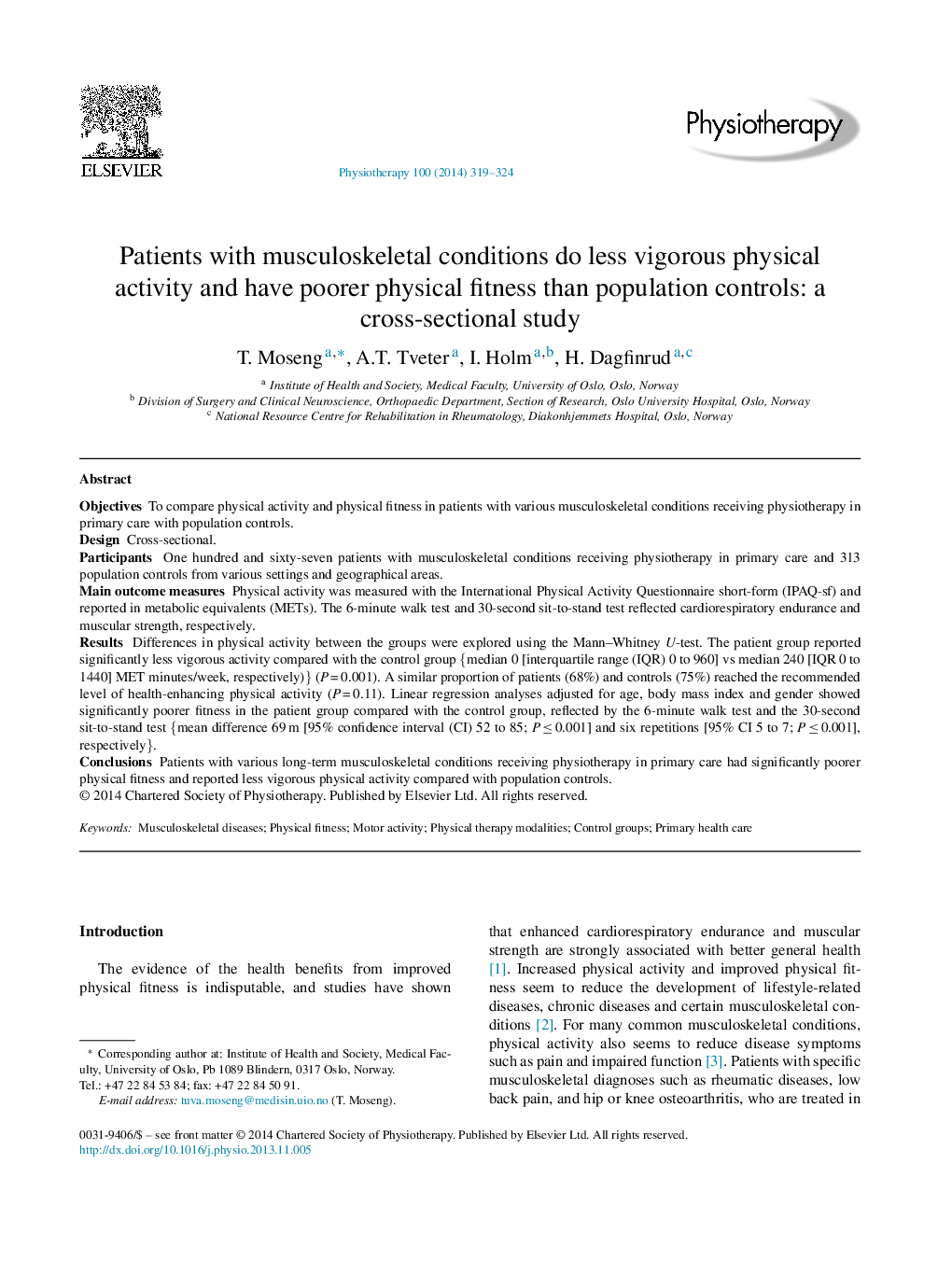| Article ID | Journal | Published Year | Pages | File Type |
|---|---|---|---|---|
| 2627744 | Physiotherapy | 2014 | 6 Pages |
ObjectivesTo compare physical activity and physical fitness in patients with various musculoskeletal conditions receiving physiotherapy in primary care with population controls.DesignCross-sectional.ParticipantsOne hundred and sixty-seven patients with musculoskeletal conditions receiving physiotherapy in primary care and 313 population controls from various settings and geographical areas.Main outcome measuresPhysical activity was measured with the International Physical Activity Questionnaire short-form (IPAQ-sf) and reported in metabolic equivalents (METs). The 6-minute walk test and 30-second sit-to-stand test reflected cardiorespiratory endurance and muscular strength, respectively.ResultsDifferences in physical activity between the groups were explored using the Mann–Whitney U-test. The patient group reported significantly less vigorous activity compared with the control group {median 0 [interquartile range (IQR) 0 to 960] vs median 240 [IQR 0 to 1440] MET minutes/week, respectively)} (P = 0.001). A similar proportion of patients (68%) and controls (75%) reached the recommended level of health-enhancing physical activity (P = 0.11). Linear regression analyses adjusted for age, body mass index and gender showed significantly poorer fitness in the patient group compared with the control group, reflected by the 6-minute walk test and the 30-second sit-to-stand test {mean difference 69 m [95% confidence interval (CI) 52 to 85; P ≤ 0.001] and six repetitions [95% CI 5 to 7; P ≤ 0.001], respectively}.ConclusionsPatients with various long-term musculoskeletal conditions receiving physiotherapy in primary care had significantly poorer physical fitness and reported less vigorous physical activity compared with population controls.
